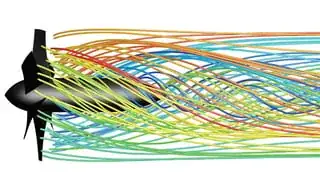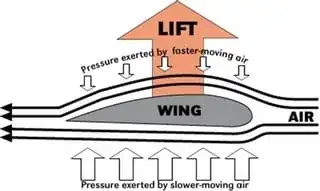How is the air pushed by the fan? At first, the fan moved and the air did not move, then the air pressure increased. The air pressure increases and the air starts to move. Is my understanding correct?
3 Answers
As soon as the blades begin to move they start colliding with air molecules. The blades are angled to push the air forward. This creates a higher pressure in front of the blades and a lower pressure behind them. The lower pressure behind the blades pulls in more air towards the spinning blades to continue the cycle.
- 8,591
I would approach understanding it in increasing levels of complexity:
- At a basic level the rotational movement of the angled blades creates a translational movement of the air stream. This can be visualized by looking a mechanical lead screw.
Air is not a solid however so some portion of the stream will rotate with the blades. This is because of viscosity in the air, inertial of the air, and zero velocity at the blade surface.

Air is also a compressible gas so as it is accelerated in the direction of the outlet it will have a higher pressure than at the surrounding air. Air at the inlet will have a lower pressure as air is being pulled from this volume.
Note that pressure and the flow is free stream happens simultaneously and is different depending on proximity to each impeller. It is NOT pressure then flow, or flow then pressure. Your observation of the air not initially moving may be do to the acceleration time of the fan, flow characteristics of the fan, and your threshold for detecting the flow.
Bernoulli's Principle also comes into play. This effect is more prominent on airfoil shaped blades, but even has an effect on impellers made from a stamped piece of metal.

- 197
- 2
- 9
The shape of the blades are designed so that, when spinning, the first points of contact with the air are behind the next ones. So, the air is accelerated forwards.
Of course, it creates a region of low pressure behind the blades, and the air from the neighborhood flows into it, keeping the continuous process.
- 17,607
